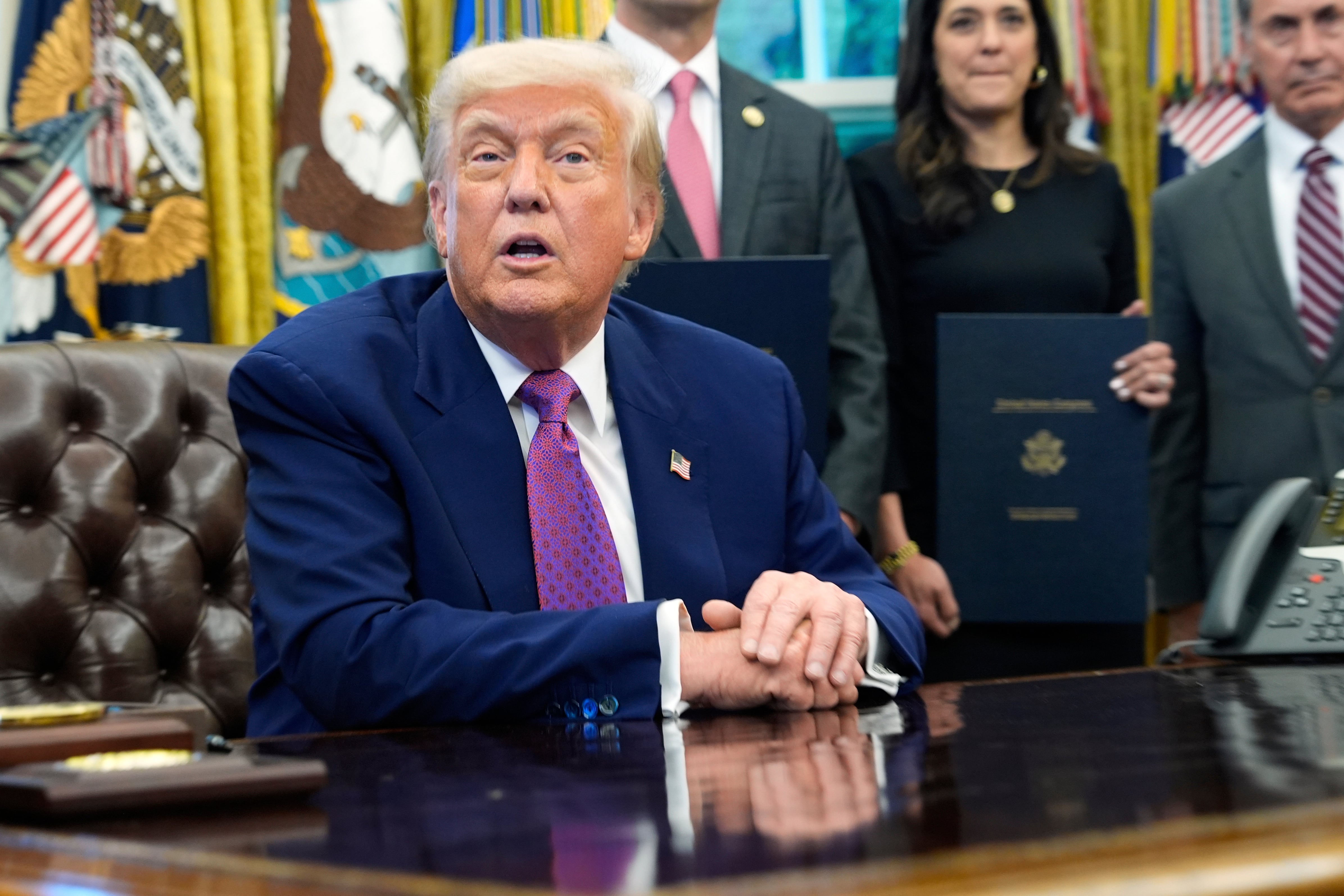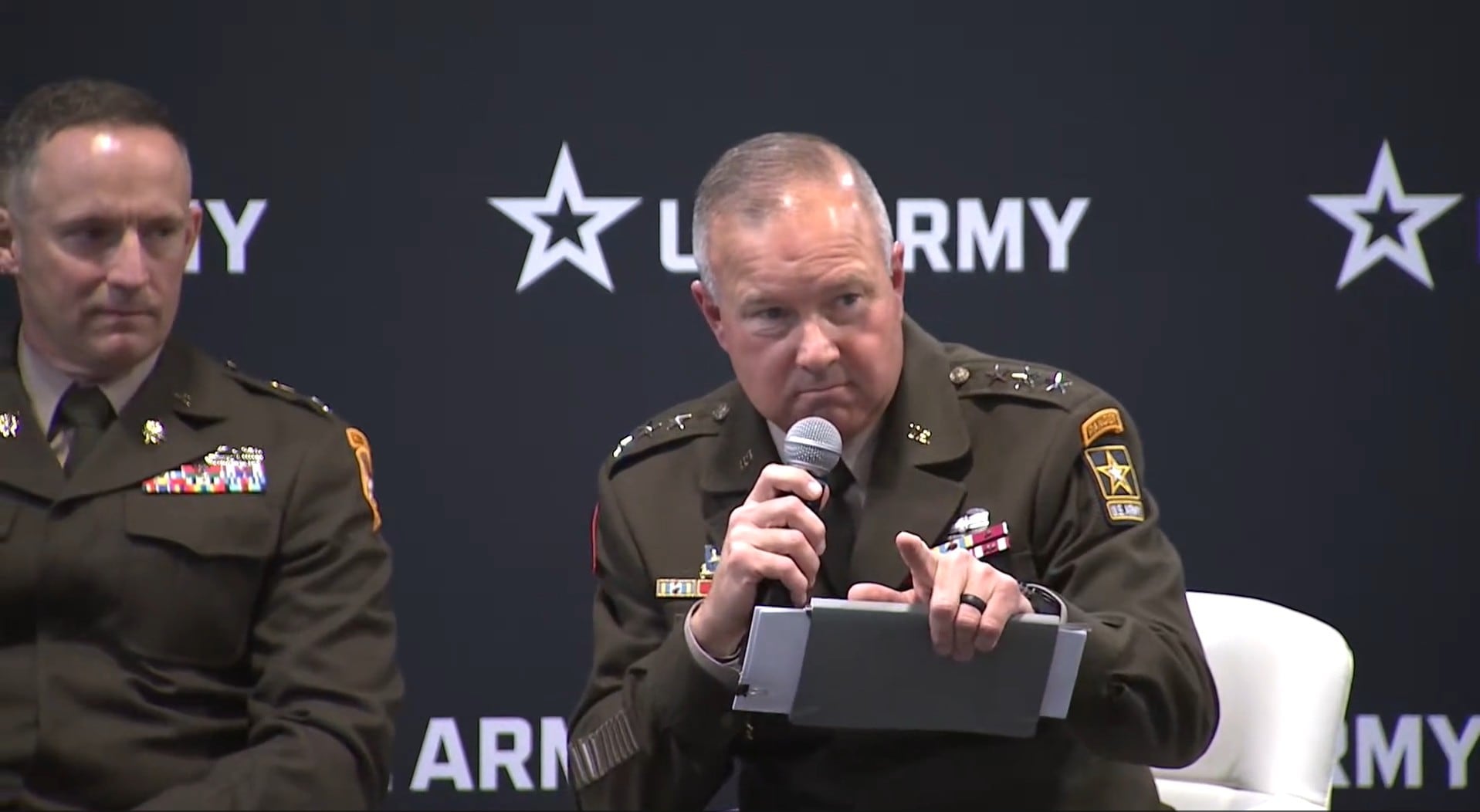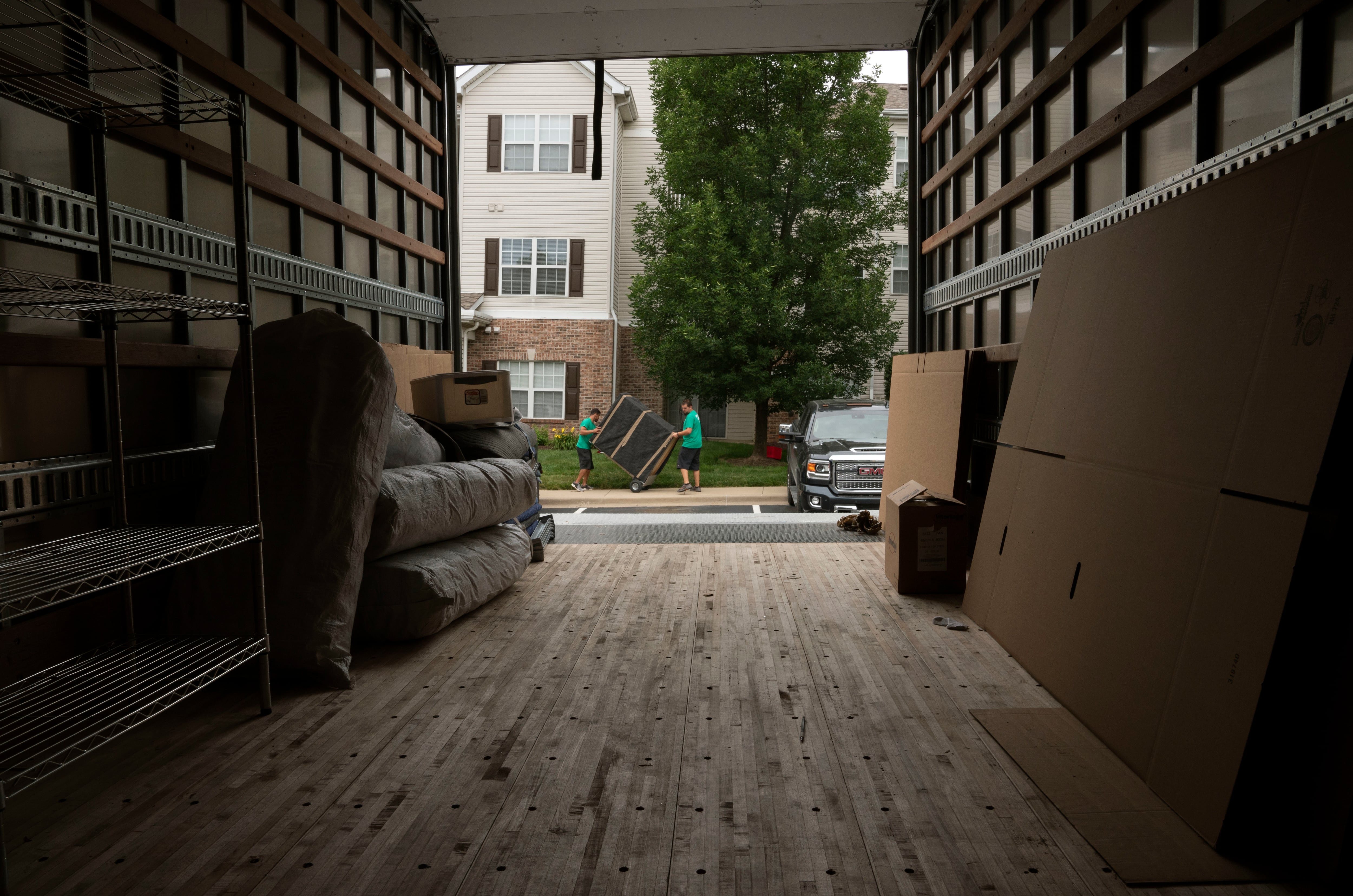The Department of Veterans Affairs would begin work on a pair of major new veterans services facilities on opposite ends of the country and ramp up efforts to fire poorly performing employees under a series of sweeping reforms directed by President Donald Trump late Friday.
The executive order, signed by Trump in an Oval Office ceremony, would also mandate reduced wait times for veterans health care appointments through expanded hours at VA facilities and relaxed rules for community care appointments.
The actions drew immediate praise from conservative groups and VA leadership, but White House officials did not provide specifics on how any of the proposals will become reality.
In a statement, they said the efforts “build on the historic reforms and achievements of President Trump’s first term, which transformed the Department of Veterans Affairs and expanded care and opportunities for our nation’s heroes.”
Here’s a closer look at each of the promised new initiatives:
The National Center for Warrior Independence
Trump’s plans for a series of offices focused on aiding homeless veterans would be crafted around the controversial West Los Angeles Veterans Affairs Medical Center site, which has been the subject of litigation for years.
Under the new White House plan, Veterans Affairs officials would build “facilities and resources to help our veterans earn back their self-sufficiency” on the 388-acre site in California. Officials said the goal is to house up to 6,000 in-need veterans by 2028.
“The center will promote self-sufficiency through housing, substance abuse treatment, and support for productive work for the veterans housed there,” a White House fact sheet stated.
Department of Veterans Affairs officials are currently contesting a federal judge’s order to build more housing for homeless veterans on the site, which currently features a variety of private businesses and sports facilities for the University of California.
It is not clear whether the new plans will replace or run alongside any judicial orders. In a statement, VA Secretary Doug Collins criticized mismanagement of the site by past administrations and said the goal is to turn the area “into a beacon of hope and a destination for homeless veterans.”
Levels of homeless veterans across America dropped to their lowest level on record in 2024, but researchers still estimated there are nearly 33,000 veterans facing housing problems on any given night. About 10% are located in the Los Angeles area.
Manchester VA Medical Center
Currently, New Hampshire is the only state in the country without a full-service veterans medical center. Trump said he hopes to change that in the near future.
The executive order mandates “an action plan to expand services to support a full-service medical center in New Hampshire” by early November. White House officials did not say when the facility could be constructed and opened to patients.
During his presidential campaign last year, Trump had promised major upgrades to the Manchester VA Medical Center to dramatically expand its health care offerings and have it meet that full-service level. At a Senate Veterans’ Affairs Committee hearing in February, Sen. Maggie Hassan, D-N.H., said the 75-year-old location needs significant upgrades as soon as possible.
“Twice over the past eight years, pipes have burst, temporarily closing parts of the medical center,” she said. “We’re talking months of rescheduled surgeries, the whole nine yards. It has been terrible.”
VA officials have already been working on a multi-year upgrade for the site, but will now be required to broaden those plans further.
White House officials did not offer a potential price tag for the hospital upgrade in New Hampshire or the homeless center in California. The administration has proposed a 4% increase in discretionary spending for VA in fiscal 2026 but would likely need additional funds to start work on new multi-billion-dollar constructions.
More VA firings?
Trump’s executive order also instructs the VA secretary to “take appropriate action against individuals who have committed misconduct, making full use of and in accordance with the Department of Veterans Affairs Accountability and Whistleblower Protection Act of 2017.”
That legislation was a keystone of Trump’s first term in office but has led to numerous unfair labor practice lawsuits against the government. During President Joe Biden’s administration, VA officials stopped using many aspects of the law to punish and dismiss workers, saying the court challenges made it too costly and impractical.
But Trump — and conservative members of Congress — blamed Biden for failing to follow through on efforts to root out poor performers within the department. Trump’s order calls for VA leaders to investigate whether past court reversals can be overturned and back pay for problematic employees revoked.
Separately, Trump moved earlier this year to weaken federal union protections as part of broader efforts to reduce the size of the government workforce. Collins has also announced a goal of cutting up to 80,000 workers from VA payrolls in coming months to decrease the size of the department’s bureaucracy.
The executive order does not appear to be focused on those efforts, but increased firings could be used to help reach those goals.
Reduced wait times
Potentially the most impactful — and least defined — section of the executive order calls for increased options for VA medical care throughout the department.
The White House plan calls for “reduced wait times for Veterans Health Administration appointments through options such as expanded hours, weekend appointments, and virtual healthcare.” No further specifics were provided by officials.
Increasing weekend and evening hours at medical sites around the country would likely require more staffing at a time when VA leaders are looking at trimming employees, although Collins has repeatedly vowed not to cut back on medical specialists.
Wait times for appointments have been a point of contention among lawmakers for years. Past VA officials have said their waits are comparable or better than the private sector on average, but they have acknowledged that patients at individual sites or seeking speciality care can still face significant delays.
Conservative lawmakers have pushed for broader use of VA’s community care options, which allow veterans to visit private-sector offices at taxpayer expense. About 40% of all VA medical appointments are currently handled this way, but Republicans said many patients still face obstacles getting faster appointments because of unnecessary program restrictions.
In a statement, House Veterans’ Affairs Committee Chairman Mike Bost, R-Ill., said that “we know that there are areas where VA is falling short and services can be improved” and applauded the president’s vision for reforms.
“Long wait times for earned benefits aren’t cutting it, a lack of resources for servicemembers to transition into civilian life and ending veteran homelessness isn’t cutting it, denied referrals for health care and mental health support aren’t cutting it,” he said. “It’s time to change the way VA works.”
More details on reforms
Trump’s order also calls for the departments of Housing and Urban Development and Veterans Affairs to “use vouchers to support homeless veterans.”
Such a program already exists, and the White House did not specify how the new program will differ from the HUD-Veterans Affairs Supportive Housing (HUD-VASH) grants that have drawn praise from advocates for its flexibility and reliability in recent years.
The White House also promised to pay for construction of the new facilities at least in part with “funds that may have been spent on housing or other services for illegal aliens.” No specifics were provided by the administration on whether such programs exist in VA today or if money from other agencies will be redirected to the department.
Collins is scheduled to testify before both the House Appropriations Committee and House Veterans’ Affairs Committee on Thursday. Several aspects of Trump’s executive order are expected to be discussed at both appearances.
Leo covers Congress, Veterans Affairs and the White House for Military Times. He has covered Washington, D.C. since 2004, focusing on military personnel and veterans policies. His work has earned numerous honors, including a 2009 Polk award, a 2010 National Headliner Award, the IAVA Leadership in Journalism award and the VFW News Media award.





